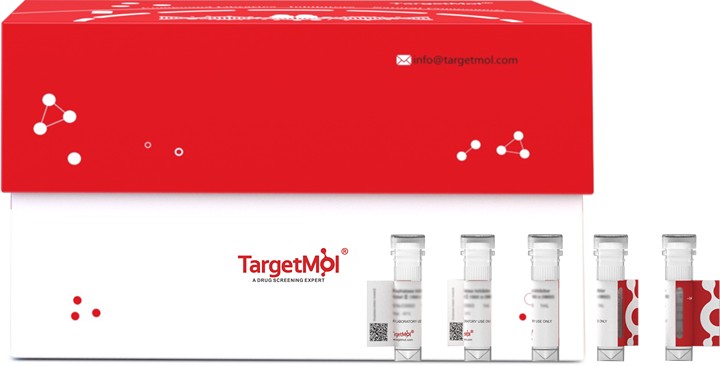购物车
全部删除  您的购物车当前为空
您的购物车当前为空
NRG1 beta 1 Protein, Human, Recombinant (CHO) is expressed in CHO Cells. The accession number is Q02297-6.

| 规格 | 价格 | 库存 | 数量 |
|---|---|---|---|
| 5 μg | ¥ 425 | 6-8日内发货 | |
| 10 μg | ¥ 688 | 6-8日内发货 | |
| 20 μg | ¥ 975 | 5日内发货 | |
| 50 μg | ¥ 1,560 | 5日内发货 |
| 生物活性 | ED 50 ≤ 0.5 ng/ml, determined by the dose-dependent stimulation of the proliferation of human MCF-7 cells. |
| 产品描述 | NRG1 beta 1 Protein, Human, Recombinant (CHO) is expressed in CHO Cells. The accession number is Q02297-6. |
| 种属 | Human |
| 表达系统 | CHO Cells |
| 标签 | Tag Free |
| 蛋白编号 | Q02297-6 |
| 别名 | NRG1-beta 1,neuregulin,Heregulin beta-1 |
| 蛋白构建 | Thr176-Lys246 |
| 蛋白纯度 | > 95% as determined by SDS-PAGE |
| 分子量 | ~7.5 kDa (Reducing conditions) |
| 内毒素 | < 0.2 EU/μg of protein as determined by the LAL method. |
| 缓冲液 | Lyophilized from a 0.2 μm filtered solution in PBS. |
| 复溶方法 | Reconstitute the lyophilized protein in sterile deionized water. The product concentration should not be less than 100 μg/ml. Before opening, centrifuge the tube to collect powder at the bottom. After adding the reconstitution buffer, avoid vortexing or pipetting for mixing. |
| 存储 | Upon receiving, this product remains stable for up to 6 months at lower than -70°C. Upon reconstitution, the product should be stable for up to 1 week at 4°C or up to 3 months at -20°C. For long term storage it is recommended that a carrier protein (example 0.1% BSA) be added. Avoid repeated freeze-thaw cycles. |
| 运输方式 | In general, Lyophilized powders are shipping with blue ice. Solutions are shipping with dry ice. |
| 研究背景 | Neuregulins or neuroregulins are a family of four structurally related proteins (NRG1, NRG2, NRG3 and NRG4) that are members of the EGF family of proteins. Studies indicate neuregulins function in nervous system development with essential roles in vertebrate embryogenesis including: cardiac development, Schwann cell and oligodendrocyte differentiation, certain aspects of neuronal development, and the formation of neuromuscular synapses. Neuregulin 1 is essential for the normal development of the nervous system and the heart. It is produced in numerous isoforms by alternative splicing, allowing it to perform a variety of functions. All NRG1 isoforms contain an EGF-like domain that is required for direct binding to ErbB3 or ErbB4 receptor tyrosine kinases. The transmembrane NRG1 isoforms contain an extracellular domain that can be proteolytically cleaved to release soluble growth factors. |